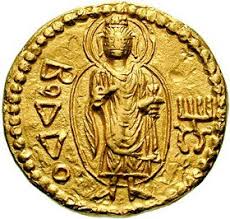Borobudur,is built in the 9th century during the reign of the Sailendra Dynasty, the temple was designed in Javanese Buddhist architecture, which blends the Indonesian indigenous cult of ancestor worship and the Buddhist concept of attaining Nirvana.Apart from the story of the Buddhist cosmology carved in stone, Borobudur has many statues of various Buddhas. The cross-legged statues are seated in a lotus position and distributed on the five square platforms (the Rupadhatu level), as well as on the top platform (the Arupadhatu level).At the Arupadhatu level (or the three circular platforms), Buddha statues are placed inside perforated stupas. The first circular platform has 32 stupas, the second 24 and the third 16, which adds up to 72 stupas.Congregational worship in Borobudur is performed in a walking pilgrimage. Pilgrims are guided by the system of staircases and corridors ascending to the top platform. Each platform represents one stage of enlightenment. The path that guides pilgrims was designed to symbolize Buddhist cosmology.



The monument's three divisions symbolize the three "realms" of Buddhist cosmology, namely Kamadhatu (the world of desires), Rupadhatu (the world of forms), and finally Arupadhatu (the formless world). Ordinary sentient beings live out their lives on the lowest level, the realm of desire. Those who have burnt out all desire for continued existence leave the world of desire and live in the world on the level of form alone: they see forms but are not drawn to them. Finally, full
Buddhas go beyond even form and experience reality at its purest, most fundamental level, the formless ocean of nirvana.The liberation from the cycle of Samsara where the enlightened soul had no longer attached to worldly form corresponds to the concept of ??nyat?, the complete voidness or the nonexistence of the self.
The Tri Tepusan inscription, dated 842, is mentioned in the sima, the (tax-free) lands awarded by ?r? Kahulunnan (Pramodhawardhani) to ensure the funding and maintenance of a Kam?l?n called Bh?misambh?ra. Kam?l?n is from the word mula, which means "the place of origin", a sacred building to honor the ancestors, probably those of the Sailendras. Casparis suggested that Bh?mi Sambh?ra Bhudh?ra, which in Sanskrit means "the mountain of combined virtues of the ten stages of Boddhisattvahood", was the original name of Borobudur.
CR : //en.wikipedia.org/wiki/Borobudur
MY DISCOVERED THE NAME OF BOROBUDUR ...Gold coin of Kanishka I (late issue, c. 150 AD). Kanishka standing, clad in heavy Kushan coat and long boots, flames emanating from shoulders, holding standard in his left hand, and making a sacrifice over an altar. Bactrian legend in Greek script (with the addition of the Kushan ? "sh" letter) ("Shaonanoshao Kanishki Koshano"): "King of Kings, Kanishka the Kushan". British Museum.

These are the ten stages of development of Bodhisattva depending on their merits and virtues (the ten stages of Boddhisattvahood)
1.Pramudita (joy) - joy at having overcome the difficulties and sufferings, now entering on the path to Buddhahood.
2.Vimala (purity) - freedom from all possible defilement.
3.Prabhakari (enlightenment) - stage of further enlightenment.
4.Arcismati (wisdom) - stage of glowing wisdom.
5.Sudurjaya (no difficulty) - stage of mastering the utmost difficulties.
6.Abhimukhi (open way) - the open way of wisdom above definitions of impurity and purity.
7.Duramgama (proceeding afar) - getting above ideas of self in order to save others.
8.Acala (unperturbed) - attainment of being unperturbed.
9.Sadhumati (discriminatory wisdom) - the finest discriminatory wisdom, knowing where and how to save, and possessing the Ten Powers.
10.Dharma megha (law cloud) - attainment of the fertilizing powers of law cloud.
The word Bodhisattva is derived from Bodhi and Sattva, the former term meaning enlightened, and the latter term meaning sentimental. Strictly speaking, a Bodhisattva should be an enlightened being, such as Arhat or even Buddha, who regards the deliverance of sentient beings as the highest aspiration. By definition, a true arhat eradicates the Three Poisons (greed, hatred and illusion) in the Three Realms (Desire, Form, Formlessness), then enters Nirvana.